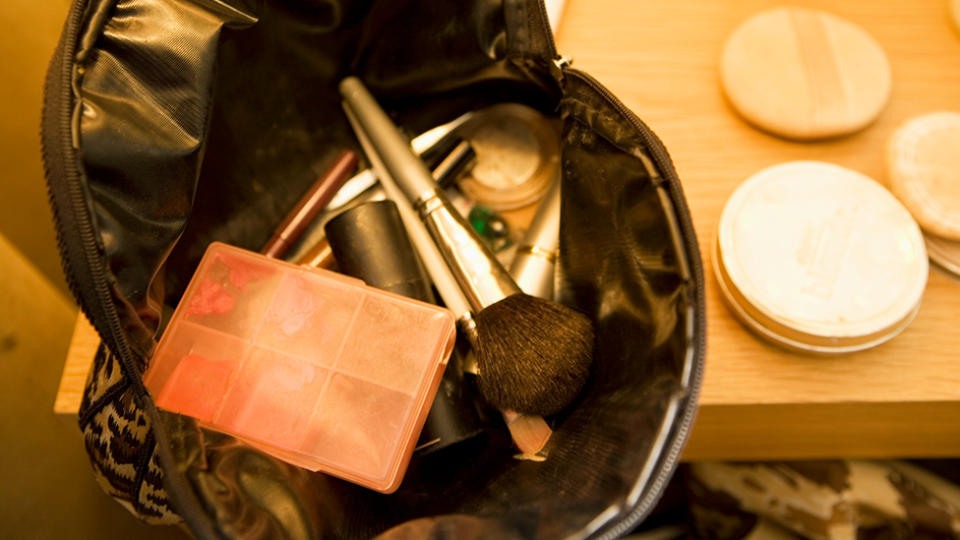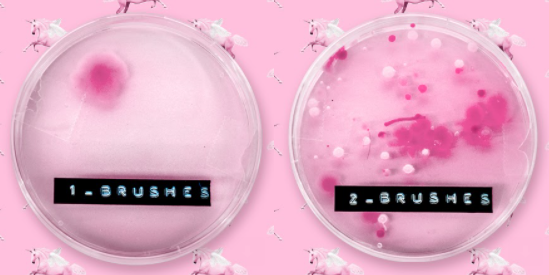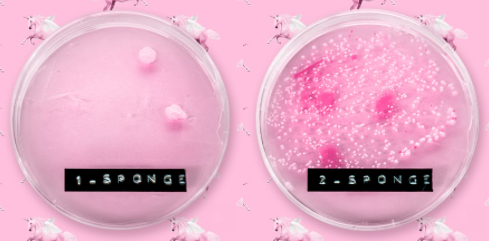‘Horrifying’ find inside everyday item
How often do you give your makeup bag a good clean out?
Nearly one in five of us aren’t in the habit of making sure our tools and products are as fresh and clean as they should be according to a survey by online retailer PrettyLittleThing.

Almost 20 per cent of those surveyed admitted to never having cleaned their tweezers, making it the dirtiest item in their beauty stash.
Eye and lip liner sharpeners came in a close second with 17 per cent of participants revealing it never gets a wash. Brushes and sponges were the fifth and sixth most-neglected items, with 8.5 and 4.5 per cent of those surveyed saying they never got a clean.
On the other hand, face towels and flannels were the most-washed with just 1.2 and 1.5 per cent of participants admitting they never got cleaned.
RELATED:
If you are a bit lax with keeping things spick and span, you might want to up your schedule after finding out just how icky those brushes, sponges, palettes and other beauty tools can get.
From bacteria to fungus and even E. Coli — yes, there will be talk about number two’s — a whole range of nasties were discovered lurking in everyday makeup products by microbiologist Amy-May Pointer on behalf of PLT.
These grubby germs can cause things like skin infections and fungal and bacterial acne which is enough to make you want to throw everything out and start again!
Pointer revealed the horrifying results by comparing the microbial growth of products and tools that were sanitised every day with those that were sanitised rarely in a petri dish experiment.

Makeup brush
In this test, Pointer found that the brush that was cleaned daily had one organism growth only, which was a type of fungus.
“The fungus may be part of the skin’s microbiota or due to the brush being stored in a dark, moist environment (such as a makeup bag or damp cupboard) allowing fungus to accumulate in a short period of time in-between uses.”
The brush that was rarely cleaned had an ‘extremely higher density’ of both bacterial and fungal organisms proliferating including presumptive Staphylococcus epidermis, Staphylococcus aureus spp., Escherichia or ‘E.’ coli and various yeast colonies.
“E. coli is a coliform organism, meaning it is derived from the gastrointestinal tract and would have got on to the cosmetic brush from fecal matter.
“Perhaps if the brush is stored near the toilet in a bathroom, the flush aerosol would lead to the growth of E. coli.
Pointer explained that the difference between washing makeup brushes regularly and rarely is illustrated in the high density and variety of different bacterial and yeast populations which have “the potential to cause skin infections, fungal and bacterial acne.”

Makeup sponge
It’s recommended that beauty sponges are washed after every use and replaced it every four to six months and considering Pointer’s findings it’s easy to see why.
“It is evident to see the difference not washing the sponge has on the density of presumptive Staphylococcus epidermidis colonies (small white dots) found all over the ‘rarely washed’ plate,” she said.
While S. epidermis is found as part of the normal skin microbiota, it has also has been found to contribute to the inflammation of acne.
Pointer noted that the density of the bacterial population on the plate indicated a lot more contamination of the sponge and illustrated why regular sanitation of cosmetic tools is essential for preventing the risk of acne and many skin infections.

Eyeshadow
Pointer explained that while the same organisms from the swab of the eyeshadow cleaned after every use are all present on the shadow that is rarely washed, they were found in a higher density along with a variety of different bacterial and fungal species including presumptive E. coli, possible Candida albicans spp. and potential presumptive Klebsiella pneumoniae.
“Although Candida albicans is part of the skin’s microbiome, it is found in the gastrointestinal and genitourinary tract region. The presumptive C. albicans colony may indicate improper storage of the cosmetic brush.
“It is not ideal to reintroduce opportunist pathogens back onto your skin and may lead to aggravation and skin conditions including acne, especially when regular washing of brushes can reduce bacterial and fungal populations tremendously.”
Never miss a thing. Sign up to Yahoo Lifestyle’s daily newsletter.
Or if you have a story idea, email us at lifestyle.tips@verizonmedia.com.




